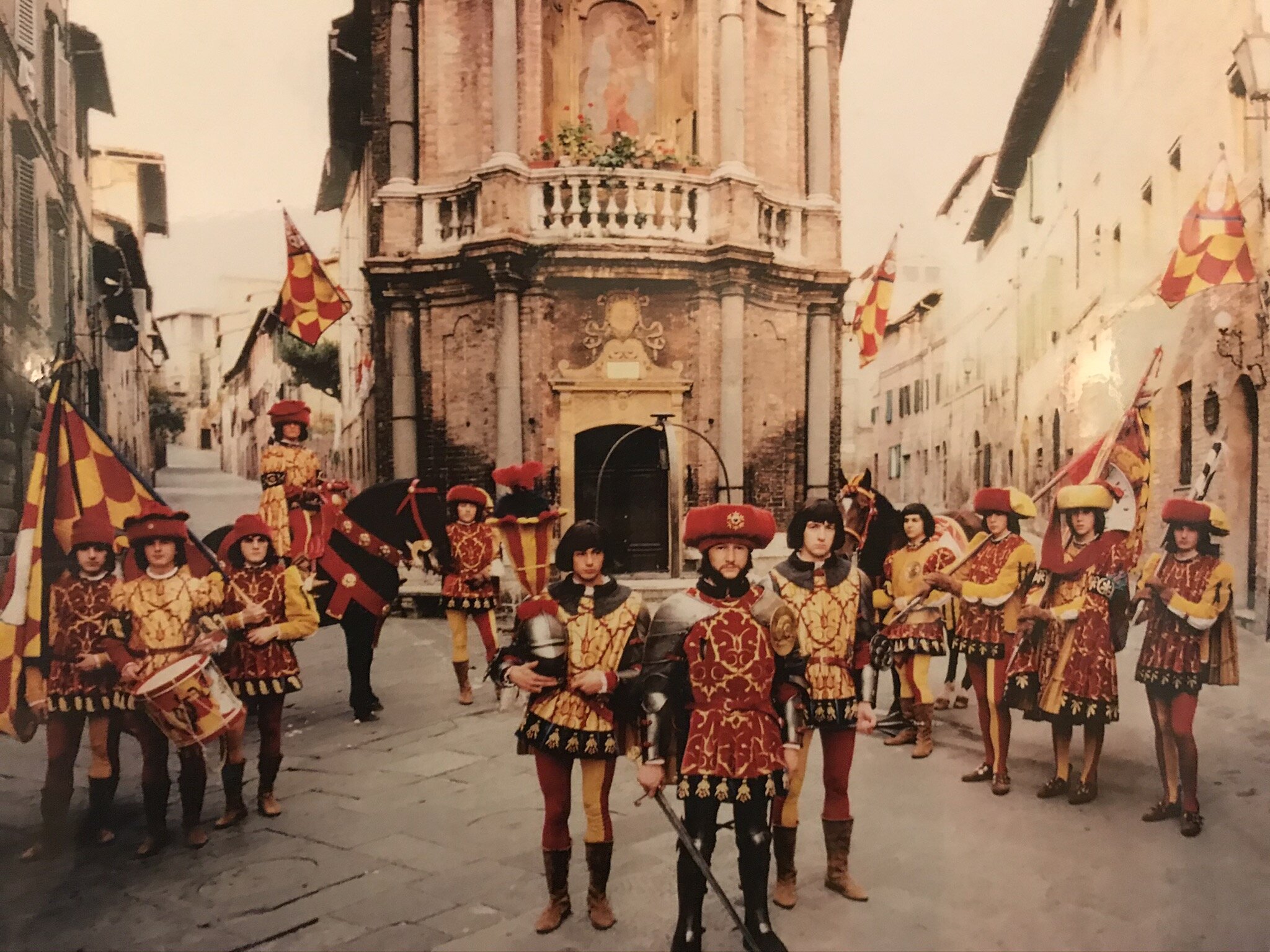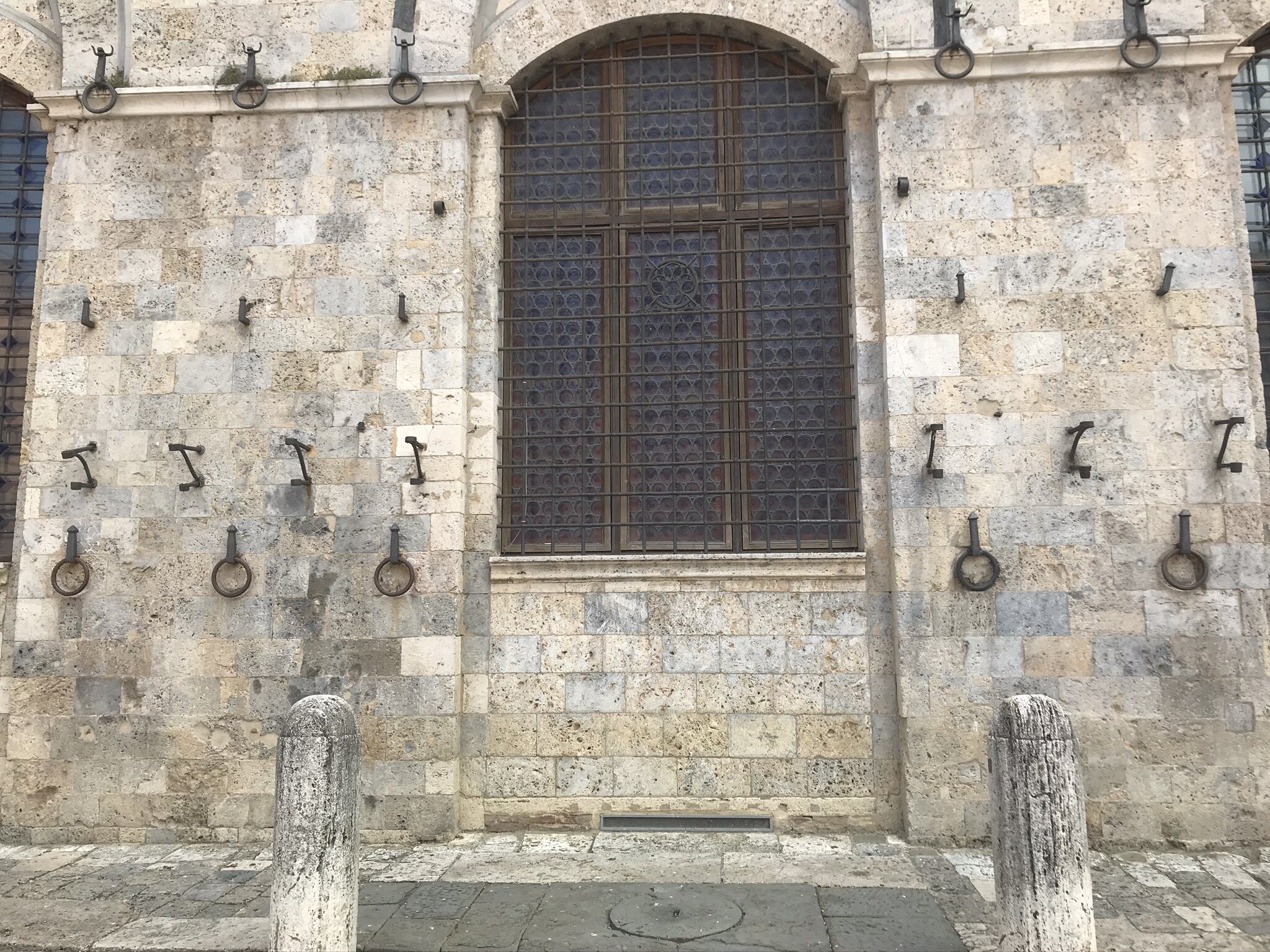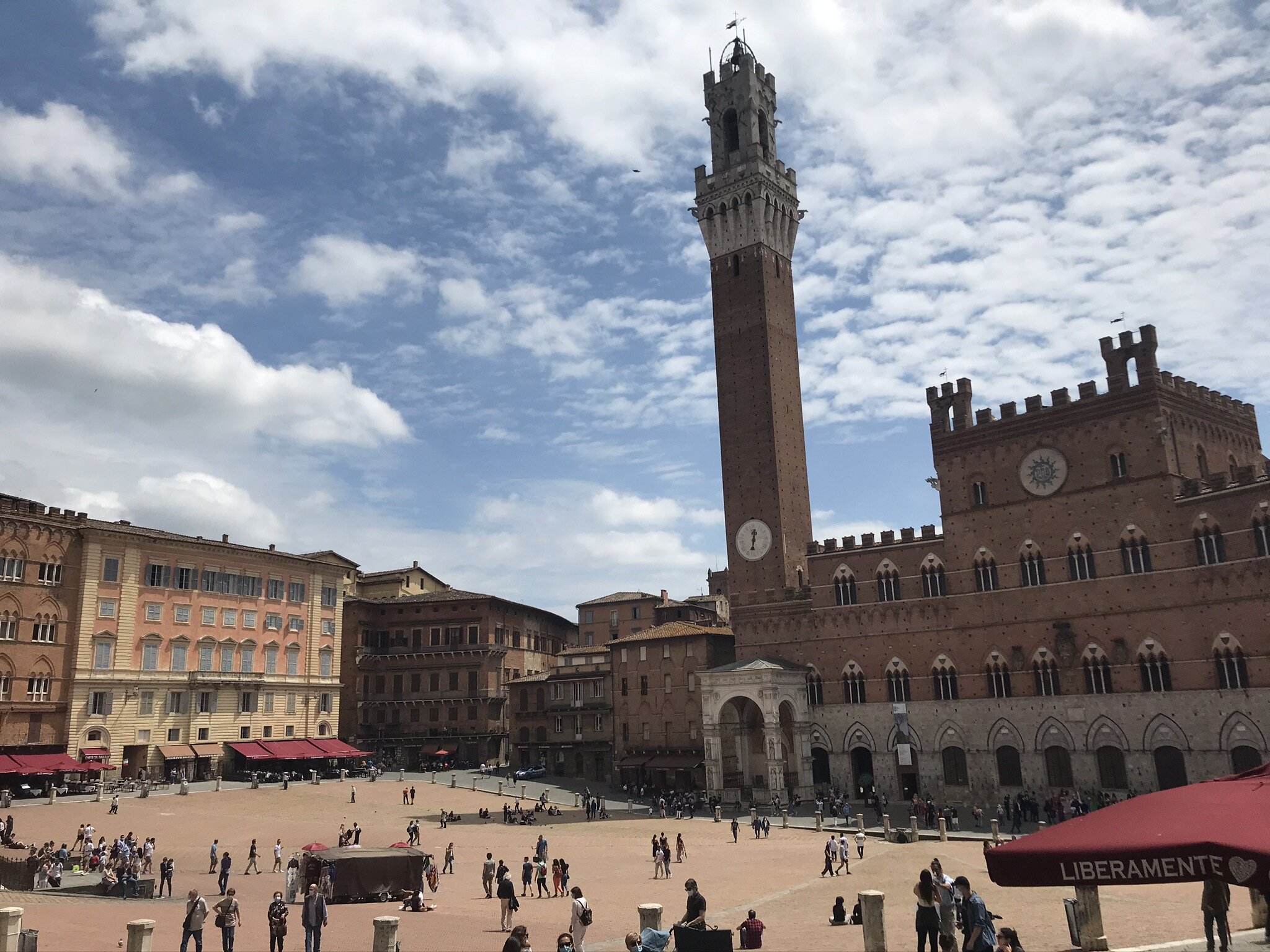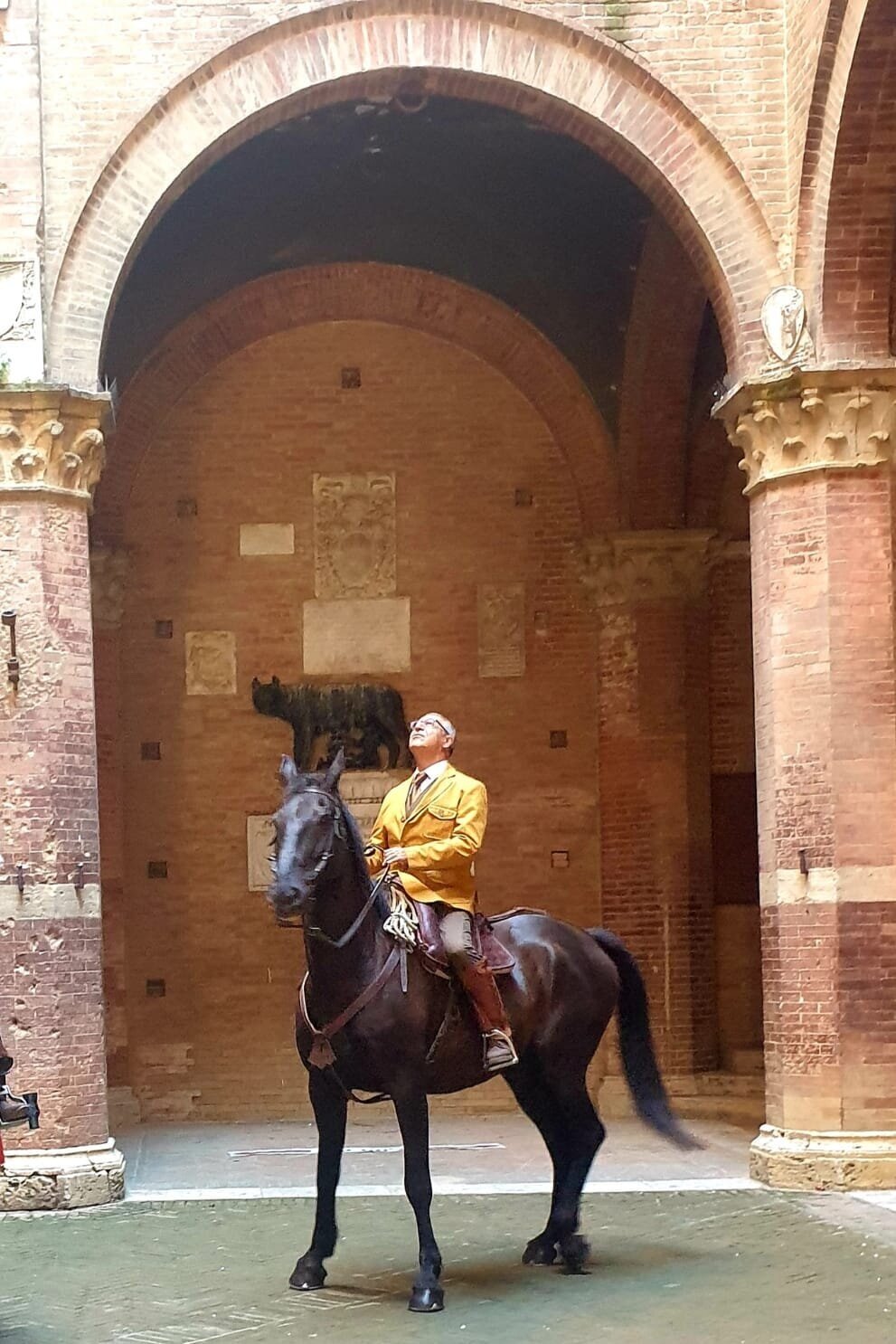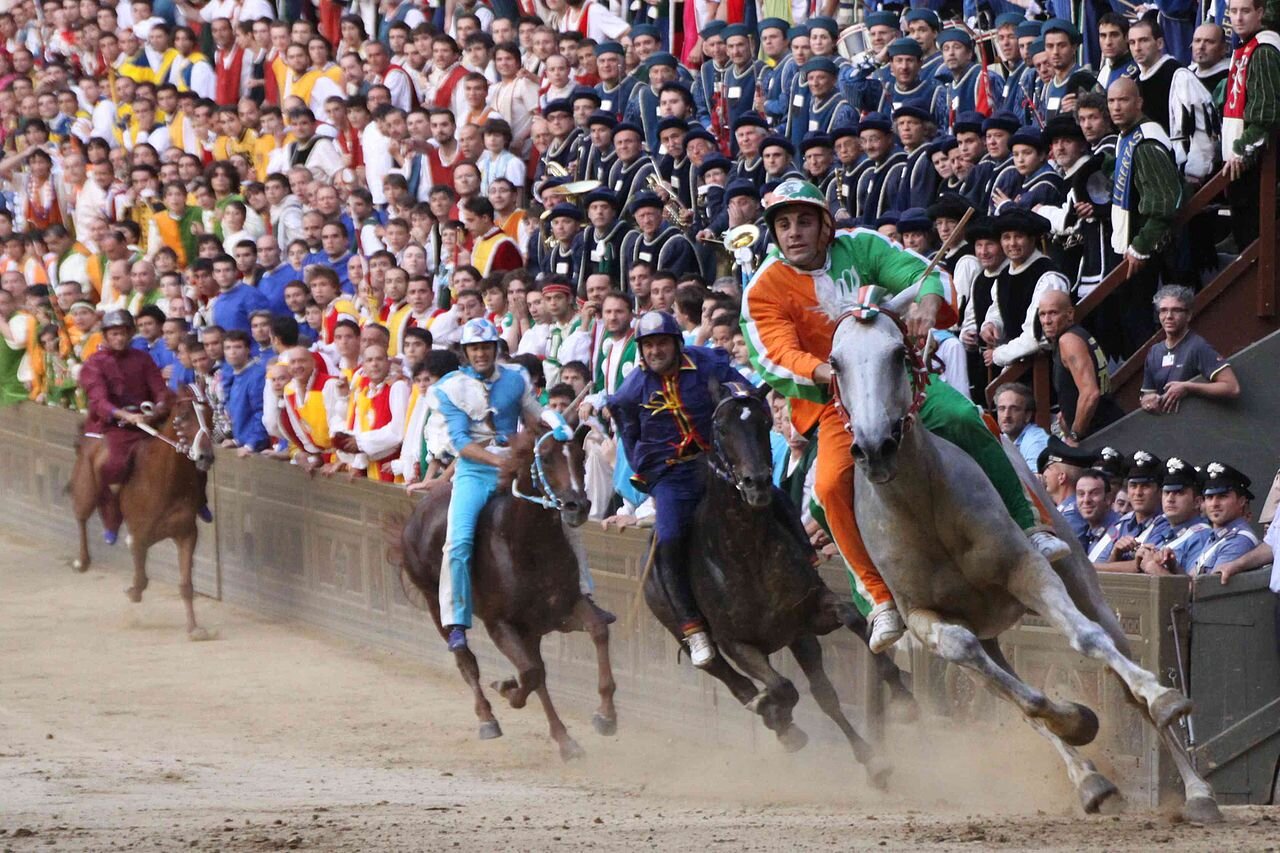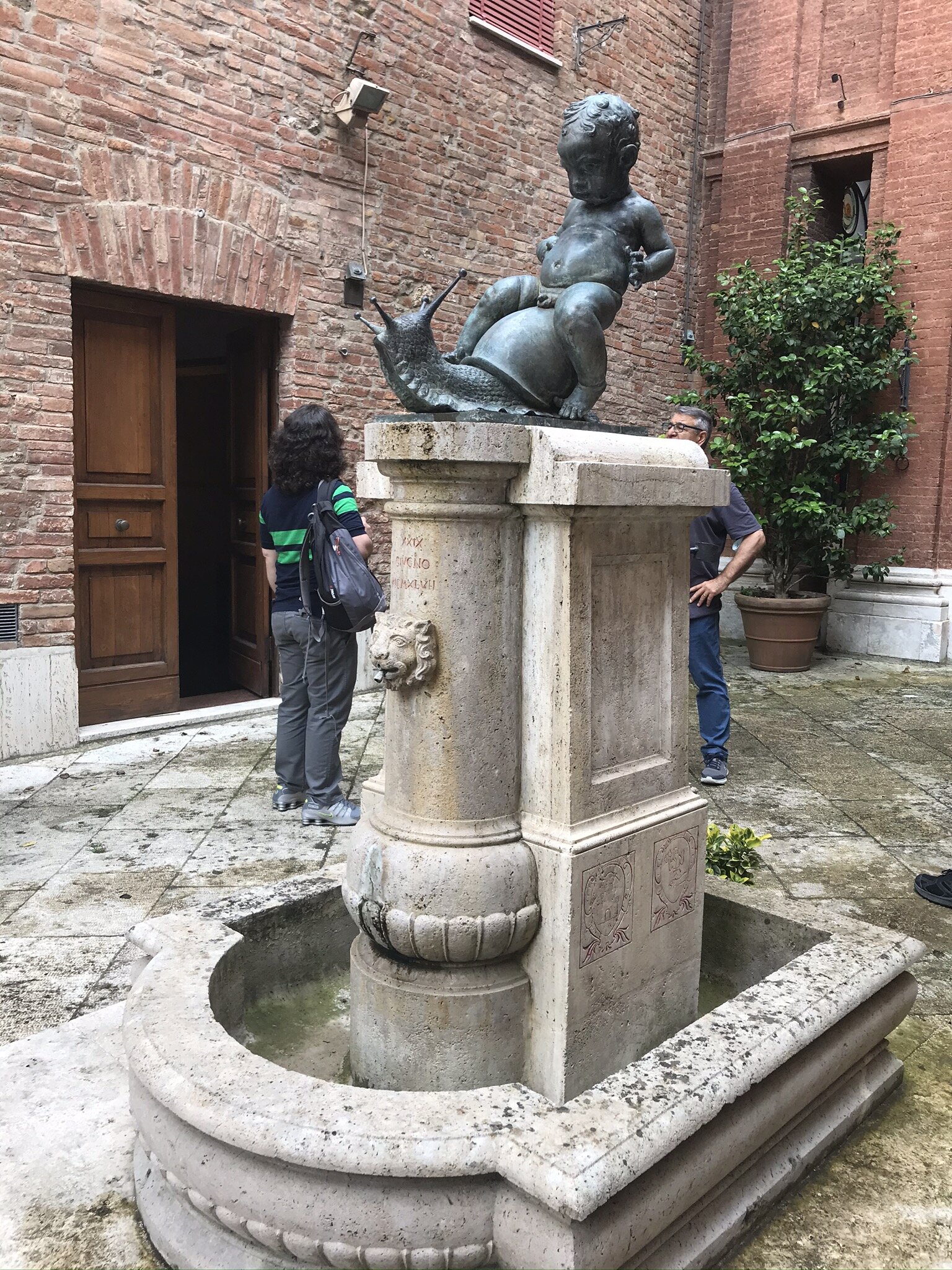Many people know what to think of when they hear the word “Pamplona”. But how many people familiar with the image of men in red and white running away from charging bulls could explain every reason why such a bizarre activity started, and continues to take place?
In the beautiful tourist-soaked streets of Siena, Tuscany, one walks through two worlds. The first is the one seen immediately with one’s eyes: the beautiful brown brick houses, the lovely churches and piazzas, and the delicious food beyond quaint porticos.
The second is hidden, unknown to all but the most curious surface observers. It’s also old; older than most countries, yet with histories more cherished than most countries as well. It is a world of glory and history, tradition and pride.
If one were to see a Renaissance faire-like parade going on in the old city, those who didn’t know any better might think it were just that: a Renaissance fair or something of the sort, and an occasion to drink, eat, dress up, and be merry.
Over the centuries, the meaning of the word “Contrada” has changed to mean different things in different times. Membership to a contrada may have at one time meant membership to a labor union, while another time it might have meant membership to a militia, a church group, or even a street gang.
“Hundreds of years ago the city was separated into areas of trade — all the shoemakers, the tailors, would stay together and their sons would take over their work after them,” says my friend Gustavo, a councilor and Argentinian immigrant to the Province of Siena. “They were all members of a contrada”.
“During the wars with Florence, maybe the [ruler] of Siena would call on the contrade to help defend the city. Each quarter of the city formed its own unit”.
I would come to learn that each of these city quarters was transformed into a sort of Capulet/Montague gang turf, where the animal sigil of each contrada, such as the panther, unicorn, fish, or mother wolf, stood mounted on the sides of buildings where the street names rested, many of which still reside there today. Some contrade were mentioned as taking part in city sporting events before Christopher Columbus even left Italy.
The 16th-century chronicler Sigismondo Tizio mentioned that in 1482 residents of the San Marco quarter built a processional float representing a giant snail, the animal sigil of that quarter, and paraded it around the city. A contemporary of Tizio’s noted that “a rousing sparing match” was organized by the same people against the other contrade for the visit of the Cardinal of Saint-Malo.
Still older than that, the contrada of the Nicchio Ward helped Siena win a battle against Florence in 1260. While 59 contrade existed originally, over time some have been abolished, their legal status revoked or their wards combined with others. Now only 17 remain.
Fiercely pious to Saint Mary of the Rosary, each contrada has its own church and sacred baptismal font, where every child of the district is baptized into the civil society/militia/supporters group/labor union. The details of these stranger societies would continue to astound me throughout my stay, but none more so than the Palio.
